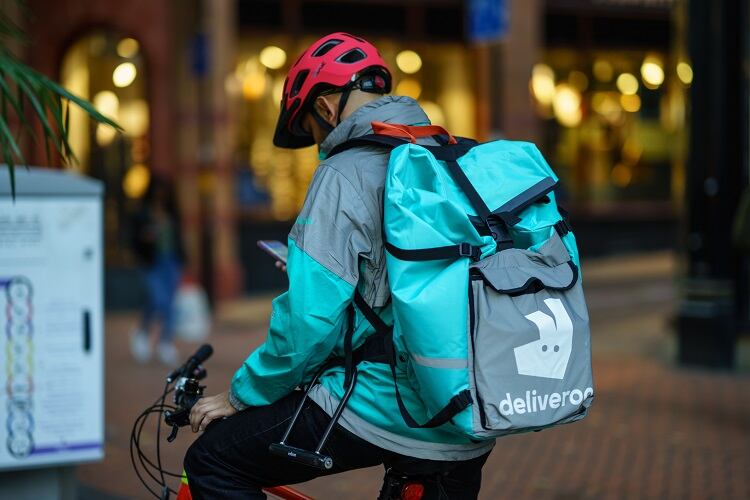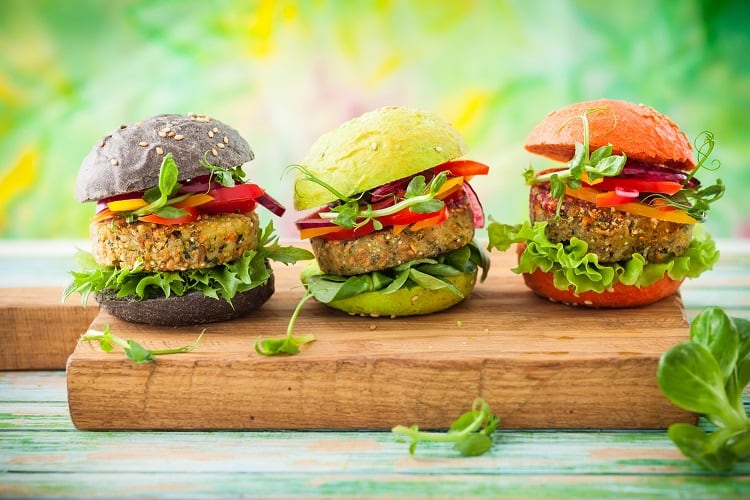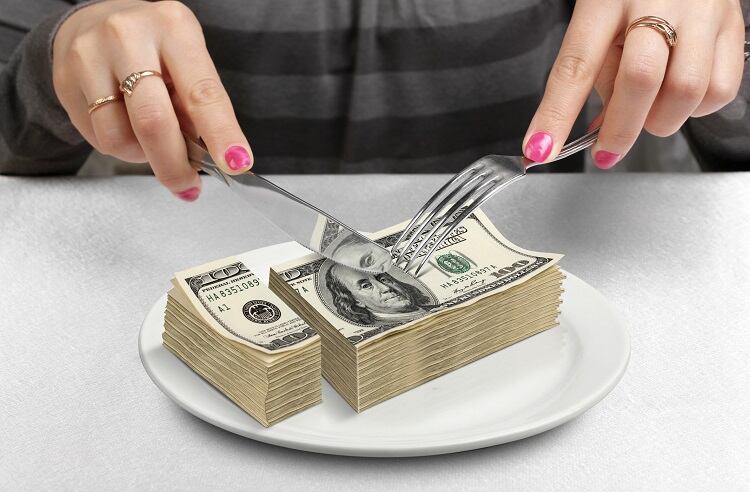The food investment space has flourished over the last five years, particularly in food tech.
The ‘first wave’ – categorised as food delivery platforms that include the likes of Deliveroo, Hello Fresh, and Just Eat – attracted almost $4bn in funding during this period.
The next generation coming up through the ranks has also closed successful funding rounds. These players focus on direct to consumer (D2C), the distribution of food products, and a new breed of e-commerce businesses known as digitally native vertical brands (DNVBs).
While the full effects of COVID-19 have yet to be seen across the investment sphere, start-ups and challenger brands may well fear an economic downturn will slow the pace of funding.
Yet experts in the field are hopeful that with the right technology, consumer-focused strategy, and attitude, start-ups and challenger brands will blossom.
Accelerated consumer trends
Industry has observed an acceleration of trends that were already ‘fast growing’ before COVID, explained Niccolo Manzoni, co-founder and managing director of venture capital firm Five Seasons Ventures, during FoodNavigator’s Unlocking Innovation webinar series.
Indeed, early in the pandemic, online food delivery businesses were regarded ‘one of the only winners’ amid the outbreak, while Gousto, Mindful Chef, and Pasta Evangelists reported unprecedented demand for home-delivered recipe boxes during lockdown.

“Notably, what has been super exciting to watch in our portfolio has been the acceleration of growth in [direct to] consumer business. That was a trend before COVID…but large corporates and incumbents have lost touch in that consumer vicinity,” said Manzoni during a panel discussion focusing on start-ups, new business development and funding.
“One of the biggest benefits of D2C apart from the distribution channel – which is e-commerce as opposed to supermarket – is the ability to build a tribe of following consumers, which allows you to pivot and change and adapt to consumer preferences much faster than a big corporate can do.”
Another area of growth amid the coronavirus pandemic, which similarly to D2C and food delivery was already on the up, is the plant-based sector.
Alternative protein businesses Memphis Meat and Impossible Foods closed impressive funding rounds this year ($160m and $500m respectively) and just yesterday, Dutch cultured beef start-up Mosa Meat announced a €5m investment.
Meat analogue business Heura is another example. The Spanish company reported expansion in supermarket distribution during the lockdown. “Heura has expanded its retail distribution by 13.7% in Spain during the lockdown with more supermarkets than ever offering their products on their shelves despite the current situation,” explained co-founder and CEO Bernat Añaños earlier this year.
For plant-based specialist Albrecht Wolfmeyer, head of ProVeg International’s Incubator, not only is the plant-based trend here to stay, but particular categories within the sector have become ‘really hot’.
“There is definitely a trend going in the direction of seafood and fish alternatives, as well as egg replacements for ingredients such as egg whites. This has been really hot, and is an area that has been neglected for a long while.
“So while there are not too many start-ups out there doing this…there is a lot of impact in that space. If you think of the chicken market, for example, there are 19 billion chickens getting slaughtered every year. This is huge, as is the egg market,” he noted during the discussion.
So what are food investors looking for?
One way of answering this question, may be to rule out what VC firms aren’t looking for in food start-ups. “Me-too products is the easy answer,” said Thea Alexander, co-founder of challenger brand network Young Foodies.

A me-too product is similar to a competitor’s product, and its objective is to prevent that competitor from maximising its market share. Alternatively, the company may focus on step-by-step incremental innovation in a particular category.
“There are a lot of ‘me toos’ and there are a lot of businesses where their unique selling point (USP) is something a VC wouldn’t necessarily deem to be a USP,” Alexander explained.
Aside from avoiding ‘me-toos’, VCs are seeking alignment on what USP ‘truly is’ and what is ‘truly distinctive’ about a product in the context of its market. Important questions are: ‘How big is the market, and what is your opportunity within that market’, we were told.
Where Young Foodies receives frustrated feedback from VCs, it usually relates to USPs. They might say ‘this isn’t very different’, or ‘this is just another flavour’, or ‘it’s a similar product but slightly healthier’. The start-up community therefore challenges its players to determine their intellectual property (IP), ensure they have something ‘truly distinctive’, ‘truly interesting’, and are ‘pushing something forward to set them apart from the rest’.
For ProVeg Internationals’ Wolfmeyer, having the right team and business model, as well as protectable and defensible technology, is crucial. Scalability is also a key factor.
More than a product
Strategic consultancy eatbigfish sees potential beyond a challenger’s product. A USP can sometimes be something intangible, according to strategy director Nick Geoghegan.
“Brands that are able to bring in a whole new perspective, or at least a whole new attitude, to a category can be a really interesting way of shaking up a category.”
Dutch chocolate bar manufacturer Tony’s Chocolonely is one such example. The brand aims to draw attention to inequality in the cocoa supply chain, through its use of ingredients, packaging, and product formulation.
“Tony’s has a fantastic chocolate product, but it hasn’t revolutionised chocolate from a flavour perspective, nor from a functional perspective. [However] they’ve been able to create a new narrative in the category.”
For Geoghegan, Tony’s Chocolonely’s attitude of ‘wanting to take on the market’ is ‘intoxicating’, and something consumers are excited by. It is this intangible element that isn’t necessarily ‘baked into the product itself’, but it is ‘baked into the brand’. “It creates something that will form a tribe around it, and that people get excited about.”

Backing the right horse
With an influx of start-ups and challenger brands bringing food tech, D2C and consumer-focused products to the fore, how do VCs know how to back a winner?
France-based VC business Five Seasons Ventures uses two primary strategies: one more subjective than the other.
The first involves ‘pattern recognition’, explained co-founder Manzoni. “We see in excess of 1000 companies a year, and we make between three and five investments per year. So there is an element of pattern recognition…and understanding the good metrics and the bad metrics [in an early-stage business].
“It’s all about benchmarking against what you know is a good and successful brand. This will range from consumer acquisition cost and lifetime value of a certain customer or customer cohort, to the margins the product can fetch, and repeat purchase…to social media following. It’s not just about likes. [It’s about] converting likes into sales.”
Secondly, Five Seasons Ventures applies a more subjective strategy by hunting for future category leaders. “We aim to back future potential leaders in categories we find attractive from an M&A standpoint,” he explained. “As an investment fund, we want to back companies that ultimately and eventually we be acquired by a larger company or float on the public market.”
Most companies the VC meets don’t fit this description, he revealed. “Most companies are ‘me-too’ companies.”
Over at Young Foodies in the UK, Alexander employs similar strategies. At every stage, whether a start-up is in an early investment process, or moving up to £50m in sales with a ‘huge tribe behind them’, the challenger network is assessing active KPIs, customer loyalty, and repeat purchase potential.
There is also an element of ‘gut feel’, she elaborated. “When we’ve seen this many brands, it takes about two minutes to get a feel for where they’re looking to take [their concept]. We would then validate that with some more robust numbers.”
The free webinar can be listened to on-demand here.





